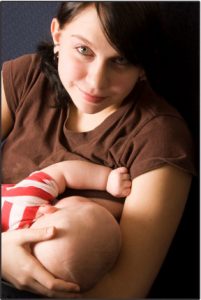 We have been asked questions about safe breastfeeding and COVID-19. We are Researchers, not physicians so we don’t give medical advice but we can provide commentary that may help in understanding the background to current guidelines.
We have been asked questions about safe breastfeeding and COVID-19. We are Researchers, not physicians so we don’t give medical advice but we can provide commentary that may help in understanding the background to current guidelines.
The basic message seems to be that there isn’t much known about transmission that is specific to Moms and babies. But there are some ‘known knows’ – this is a respiratory disease so the thing that it makes sense to control is transmission by all the routes that are typical for the Flu.
CDC has sections on breastfeeding and COVID-19, we have clipped out sections and pasted below but you might want to check the links for new content as our knowledge expands.
Is there transmission of COVID-19 through breast milk?
https://www.cdc.gov/coronavirus/2019-ncov/prepare/pregnancy-breastfeeding.html
This is the basic recommendation
“Much is unknown about how COVID-19 is spread. Person-to-person spread is thought to occur mainly via respiratory droplets produced when an infected person coughs or sneezes, similar to how influenza (flu) and other respiratory pathogens spread. In limited studies on women with COVID-19 and another coronavirus infection, Severe Acute Respiratory Syndrome (SARS-CoV), the virus has not been detected in breast milk; however we do not know whether mothers with COVID-19 can transmit the virus via breast milk.”
Minimizing Coronavirus transmission while breastfeeding
https://www.cdc.gov/coronavirus/2019-ncov/hcp/inpatient-obstetric-healthcare-guidance.html
This link was more intended for a hospital setting but they are discussing some principles on how to manage that person to person spread – in this case spread to the baby.
………………………
If colocation (sometimes referred to as “rooming in”) of the newborn with his/her ill mother in the same hospital room occurs in accordance with the mother’s wishes or is unavoidable due to facility limitations, facilities should consider implementing measures to reduce exposure of the newborn to the virus that causes COVID-19.
- Consider using engineering controls like physical barriers (e.g., a curtain between the mother and newborn) and keeping the newborn ≥6 feet away from the ill mother.
- If no other healthy adult is present in the room to care for the newborn, a mother who has confirmed COVID-19 or is a PUI should put on a facemask and practice hand hygiene1 before each feeding or other close contact with her newborn. The facemask should remain in place during contact with the newborn. These practices should continue while the mother is on transmission-based precautions in a healthcare facility.
Breastfeeding
- During temporary separation, mothers who intend to breastfeed should be encouraged to express their breast milk to establish and maintain milk supply. If possible, a dedicated breast pump should be provided. Prior to expressing breast milk, mothers should practice hand hygiene.1 After each pumping session, all parts that come into contact with breast milk should be thoroughly washed and the entire pump should be appropriately disinfected per the manufacturer’s instructions. This expressed breast milk should be fed to the newborn by a healthy caregiver.
- If a mother and newborn do room-in and the mother wishes to feed at the breast, she should put on a facemask and practice hand hygiene before each feeding.”
A summary of the research literature on newborn babies, breastmilk and Coronavirus (SARS 2003 and the COVID-19 outbreaks)
We went back to the studies of SARS around 2003-2005. There are a few case reports. In North American cases the Moms seem to have given birth months after the infections, the main part of the disease process happened earlier in the pregnancies. In some cases, the reports mention antibodies to the virus could be found in breast milk – this is probably a good thing providing protection to the feeding baby.
In one case they looked for virus in breastmilk of the previously infected Mom but did not find it. However, note that the active infection was months earlier.
https://www.ncbi.nlm.nih.gov/pmc/articles/PMC3322896/
https://www.ncbi.nlm.nih.gov/pmc/articles/PMC3320293/#R3
https://www.ncbi.nlm.nih.gov/pubmed/15625153
There is an English language report for 5 Hong Kong pregnancies in which the pregnant women were infected. A twin was lost from one pregnancy but the other babies survived and were negative for virus in the perinatal period.
https://pediatrics.aappublications.org/content/112/4/e254.long
For the current pandemic of COVID-19 there is one report on pregnancy and delivery that involved nine Chinese cases of infection late in pregnancy, the women were positive for virus by throat swab and had a range of relatively mild symptoms. Babies were delivered to infected Moms in China by a cesarean. The babies were negative for virus by throat swab at that point and, in the six tested cases, the milk of the Moms was negative for virus. Amniotic fluid, cord blood was also negative.
https://www.thelancet.com/pdfs/journals/lancet/PIIS0140-6736(20)30360-3.pdf
